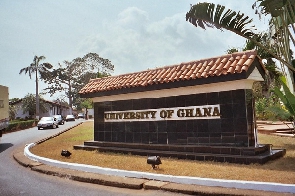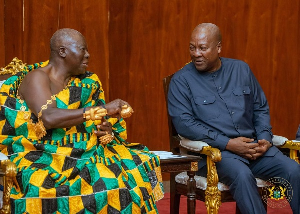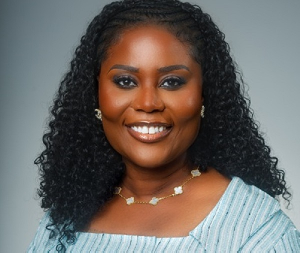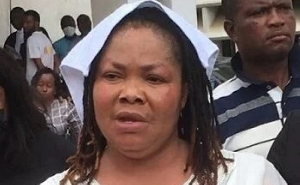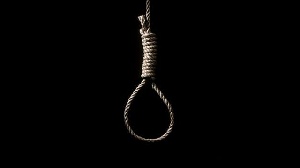Joseph Boakye Danquah, the Doyen of Gold Coast politics, has a number of achievements under his belt. The mobilization of the cocoa farmers to support the creation of the University of Ghana in the 1940s led to the establishment of the University of Ghana. Danquah’s role was in persuading the illiterate farmers of our country to support this venture. The colonial authorities, crying bankruptcy in the wake of the expensive Second World War, wanted to set up a university of West Africa in Ibadan in Nigeria with the campus in Ghana being just a satellite campus. Danquah persuaded the farmers to fill in this funding gap and his sterling role led to us having Legon as a university and not just a campus of a West African university
The idea of a university was not new in what is now Ghana. In 1896 Nana Prempeh I was in the process of setting up what is now Kwame Nkrumah University of Science and Technology was thwarted by his overthrow and exile to Seychelles. Nana Prempeh had instructed the Owusu-Ansah brothers to set up as Asante Ambassadors to the United Kingdom with its office at Lennox Gardens in London. They were to raise funding for industry, infrastructure development and education. The letter instructing them is printed on p.651 in Ivor Wilks classic study of Asante in the 18th and 19th Century: Structure and Evolution of a Political Order (1975).
Sadly events overtook the Owusu-Ansahs and Asanteman and thus Tech as we know it was to wait until 1948 when the Watson Commission report in black and white (for those who care to read) stated that there is to be established in Kumasi a University of Science and Technology. Tech began as a University College, just like Cape Coast (which was the child and brains of the first President Kwame Nkrumah) and per the plan after 10 years it became a fully-fledged university in 1951. Interestingly one the surveyors for the new university and before he switched careers to become a lawyer, was one Jacob Matthew Poku, the nephew of Nana Prempeh II and who in turn became Asantehene Opoku Ware II.
But I digress. I always assumed as a little boy that the Gold Coast was a single colonial entity – apparently I was wrong. The Gold Coast was just that, the coastal colony that the UK took over and starting officially around 1844 and was today’s Western, Central, Greater Accra and Eastern Regions It was later that I came to understand that the modern-day Asante and Brong-Ahafo regions were governed separately and so too were the modern-day two upper regions and the Northern region. I also found out that a unification of Asante and the Colony was hotly contested and deliberated for a while before unification took place – with the North joining in 1950 and the modern-day Volta region joining by plebiscite in 1956
The record is that a number of Gold Coast nationalists worked hard to unify the Gold Coast with Asante. This was understandable as Asante with its vast wealth and manpower was surely going to double the productive capacity of the colony. The Gold Coast nationalist Joe Appiah has noted how JB Danquah, supported by Kojo Thompson and Arku Korsah led the unification drive. The British planned to grant Asante separate colony status with its own Legislative Council. What this would mean was that upon any grant of independence, Asante and Brong-Ahafo were going to be totally separate countries.
JB Danquah disagreed and prepared a unification document that was signed by the Joint Provincial Council of the Gold Coast and African members of the Legislative Council. This document was the socio-economic basis for persuading Nana Prempeh II and Asanteman to accept unification. Thus Danquah led a “mission to Asante” with this unification in mind in 1943. After much persuasion the Asantehene and the Asante Confederacy Council sent their r petition to the Secretary of State for the Colonies. When the Secretary, Oliver Stanley, actually visited the Gold Coast in the later part of 1943 Danquah presented to him a 400page memorandum entitled What Needs to be Changed in the Gold Coast that had been drawn up by himself, Arku Korsah and Kojo Thompson. This was the blueprint for a unification constitution and with some changes and embracing the main idea the Burns constitution of 1946 largely mirrored this effort. It was this step that formed the basis of the Burns Constitution bringing Asante and the Colony together with the North being pulled into the orbit of the new emerging entity in 1950
As noted by Martin Wight in his book the Gold Coast Legislative Council (1947) this marked the high point of Danquah’s impact on the Gold Coast. Danquah was the forerunner of things to come on the Gold Coast. He did form, with Pa Grant, the UGCC in 1947 but perhaps his time was up and the tide of events was shifting from his measured approach to unification, and constitution building, and independence.
Danquah as I have been made to understand him was not a fiery public orator and probably did not have that much by way of charisma. He was more at home in court as a formidable barrister or as a scholar writing on Akan custom and also writing on the importance of human rights for all. I assume then that as one NPP politician once said, he was far too serious for the politics of the 1950s. Perhaps today with greater information and more outlets to express political views he could have led Ghana but at the time with public rallies as the main vehicle for disseminating information to people, there is very little room for scholarly discourse in the hot African sun
Nevertheless anyone who masterminds the basis for the unification of Ghana leaves that behind that as a great legacy and as the history of our struggles unfold we will always remember him and his first strike for the creation of what we call Ghana
Opinions of Saturday, 12 May 2018
Columnist: Kwabena Nyamekye

